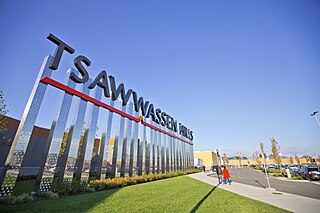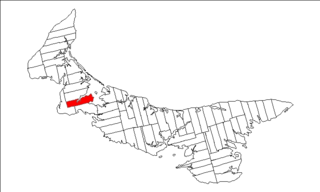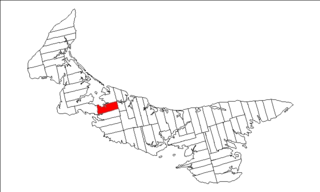
United Empire Loyalists is an honorific title which was first given by the 1st Lord Dorchester, the Governor of Quebec, and Governor General of The Canadas, to American Loyalists who resettled in British North America during or after the American Revolution. At the time, the demonym Canadian or Canadien was used to refer to the indigenous First Nations groups and the descendants of New France settlers inhabiting the Province of Quebec.

East Florida was a colony of Great Britain from 1763 to 1783 and a province of Spanish Florida from 1783 to 1821. Great Britain gained control of the long-established Spanish colony of La Florida in 1763 as part of the treaty ending the French and Indian War. Deciding that the territory was too large to administer as a single unit, Britain divided Florida into two colonies separated by the Apalachicola River: East Florida with its capital in St. Augustine and West Florida with its capital in Pensacola. East Florida was much larger and comprised the bulk of the former Spanish territory of Florida and most of the current state of Florida. It had also been the most populated region of Spanish Florida, but before control was transferred to Britain, most residents – including virtually everyone in St. Augustine – left the territory, with most migrating to Cuba.

Delta is a city in the Lower Mainland region of British Columbia, Canada, as part of Greater Vancouver. Located on the Fraser Lowland south of Fraser River's south arm, it is bordered by the city of Richmond on the Lulu Island to the north, New Westminster to the northeast, Surrey to the east, the Boundary Bay and the American pene-exclave Point Roberts to the south, and the Strait of Georgia to the west.

Events from the year 1792 in Canada.

Tsawwassen is a suburban, mostly residential community on a peninsula in the southwestern corner of the City of Delta in British Columbia, Canada. It provides the only road access to the American territory on the southern tip of the peninsula, the community of Point Roberts, Washington, via 56th Street. It is also the location of Tsawwassen Ferry Terminal, part of the BC Ferries, built in 1959 to provide foot-passenger and motor vehicle access from the Lower Mainland to the southern part of Vancouver Island and the southern Gulf Islands. Because Tsawwassen touches a shallow bank, the ferry terminal is built at the southwestern end of a 3 km (1.9 mi) causeway that juts into the Strait of Georgia. Boundary Bay Airport, a major training hub for local and international pilots which also provides local airplane and helicopter service, is ten minutes away. The Roberts Bank Superport is also nearby.

Ladner is a part of the City of Delta, British Columbia, Canada, and a suburb of Vancouver, British Columbia. It was created as a fishing village on the banks of the Fraser River.

Edmund Fanning was an American-born colonial administrator and military officer. Born in New York, he became a lawyer and politician in North Carolina in the 1760s. He first came to fame as the focus of hatred of the Regulators, and led anti-Regulator militia in the War of the Regulation. When the American Revolutionary War broke out, he was driven from his home in New York, and joined the British Army, recruiting other Loyalists. He served during campaigns in New England and the South. At the end of the war in 1783 he became a United Empire Loyalist, settling in Nova Scotia.

Lot 24 is a township in Queens County, Prince Edward Island, Canada. It is part of Charlotte Parish. Lot 24 was awarded to Charles Lee and Francis MacLeane in the 1767 land lottery. It was sold in arrears for quitrent in 1781 and a portion was granted to Loyalists in 1783.

Lot 32 is a township in Queens County, Prince Edward Island, Canada. It is part of Charlotte Parish. Lot 32 was awarded to Sir William Young, 1st Baronet in the 1767 land lottery. It was sold for arrears of quitrent in 1781 and a portion was granted to Loyalists in 1783. Lot 32 is the only township in the province not used by Statistics Canada as a census subdivision.

Lot 50 is a township in Queens County, Prince Edward Island, Canada. It is part of St. John's Parish. Lot 50 was awarded to Henry Gladwin and Captain Peter Innes in the 1767 land lottery. One quarter of the lot was granted to Loyalists in 1783.

Lot 16 is a township in Prince County, Prince Edward Island, Canada. It is part of Richmond Parish.

Lot 17 is a township in Prince County, Prince Edward Island, Canada. It is part of Richmond Parish. Lot 17 was awarded to Bingham and Theobold Burke in the 1767 land lottery. Half of it had been sold for arrears of quitrent by 1781, and one quarter was granted to Loyalists. Six-thousand acres were sold to Acadians in 1800.

Lot 19 is a township in Prince County, Prince Edward Island, Canada. It is part of St. David's Parish. Lot 19 was awarded to brothers John and Walter Patterson in the 1767 land lottery. One quarter was granted to Loyalists in 1783.

Lot 26 is a township in Prince County, Prince Edward Island, Canada. It is part of St. David's Parish. Lot 26 was awarded to Robert Stewart and Peter Gordon in the 1767 land lottery. One half was sold for arrears in quitrent in 1781 and one quarter was granted to Loyalists in 1783.

Lot 56 is a township in Kings County, Prince Edward Island, Canada. It is part of St. George's Parish. Lot 56 was awarded to George Townshend, 1st Marquess Townshend in the 1767 Lottery. General Townshend had assumed command of the British forces after General James Wolfe fell at the Battle of the Plains of Abraham during the Seven Years' War. Townshend later became Lord Lieutenant of Ireland. One quarter of the lot was granted to Loyalists in 1783.
Richard Pierpoint, also known as Black Dick, Captain Dick, Captain Pierpoint, Pawpine, and Parepoint was a British soldier of Senegalese descent. Brought to America as a slave, he was granted freedom to fight on the side of the British in the American Revolution. After the war he settled in a Black community in Upper Canada, where he was given some land. He also participated in the War of 1812.
Wilmot is an unincorporated community located in Annapolis County in the Canadian province of Nova Scotia.
Moses Gerrish was a United Empire Loyalist and one of the original settlers of the island of Grand Manan.

A township in Nova Scotia, Canada, was an early form of land division and local administration during British colonial settlement in the 18th century. They were created as a means of populating the colony with people loyal to British rule. They were typically rural or wilderness areas of around 100,000 acres (400 km2) that would eventually include several villages or towns. Some townships, but not all, returned a member to the General Assembly of Nova Scotia; others were represented by the members from the county. Townships became obsolete by 1879 by which time towns and counties had become incorporated.
Spring Bay is a rural community in Lot 18, Prince County, Prince Edward Island, Canada. Spring Bay is part of the incorporated municipality of Malpeque Bay.
















